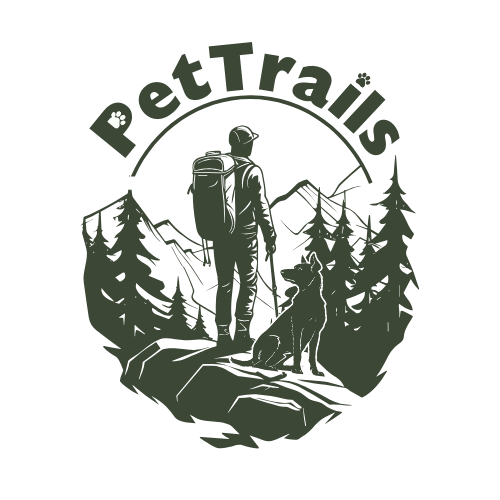
Hiking Through Rehab: Reintroducing Your Dog to the Trail After Injury or Surgery
Share
Helping your dog return to hiking after surgery or injury can feel daunting, but with a thoughtful, vet-approved approach, it can be a safe and rewarding journey. This blog post walks you through each stage of recovery, blending practicality with emotional support to ensure your pup heals strong and confident.
Follow the Veterinarian’s Instructions — Your North Star
Every injury and surgery is unique. Always lean on your vet's timeline and guidelines. These are tailored to your dog’s specific procedure, health, and personality. Personalized post-operation plans help avoid setbacks and complications.
Note on breed and size: Smaller breeds tend to heal more quickly from soft-tissue procedures, while larger breeds may need more time due to greater joint stress and slower healing. Always clarify with your vet how your dog’s breed and size affect the recovery timeline.
Stage One: Immediate Post-Op Rest & Controlled Movement (Days 1–14+)
- Create a recovery-safe space. Use a crate or gated area to restrict movement and prevent jumping, running, or climbing stairs.
- Start leash-only bathroom walks. Short, slow walks, just enough for potty breaks, are encouraged. No running or rough play.
- Introduce gentle rehab movement. If the vet approves, techniques like Passive Range of Motion (PROM), massage, icing, and light weight‑shifting can begin to preserve joint health and circulation.
Stage Two: Early Strength and Mobility (Weeks 3–8)
-
Gradually extend walk duration.
- Small breeds (under 25 lbs): Start with 5-minute walks and increase by 3–5 minutes weekly.
- Medium to large breeds (25–70 lbs): Start at 5–10 minutes, increasing by 5 minutes per week.
- Giant breeds (70+ lbs): May need to stay at 5–10 minutes for 2–3 weeks before increasing due to higher joint strain.
-
Add controlled rehab exercises:
- Walk in large figure-eights to improve coordination.
- Introduce gentle curbs or mild inclines to rebuild rear-end strength.
- Practice sit-to-stand transitions and side-to-side weight shifts.
- Continue ice, heat, and massage as needed. These reduce inflammation, enhance blood flow, and support tissue recovery.
Stage Three: Testing Readiness for Off-Leash and Active Hiking (Weeks 9–12+)
- Regular vet check-ins are key. Around week 8, X-rays or orthopedic evaluations may confirm bone or ligament healing. Off‑leash activity should only resume once your vet gives the green light.
-
Off‑leash progression:
- Begin with 5-minute sessions, 3–5 times daily.
- Gradually extend by 5-minute increments per week based on your dog’s breed, size, and visible comfort.
- Hydrotherapy (if accessible): Swimming or underwater treadmill sessions allow for cardio and strength training without joint impact, especially helpful for medium to large breeds.
Stage Four: Phased Hike Reintroduction
Once fully cleared by your vet:
-
Start with short, flat hikes.
- Aim for 10–15 minutes of hiking on even ground.
- Increase by no more than 10% per week if your dog shows no limping or fatigue.
-
Gradually add terrain:
- Introduce mild hills, soft forest paths, or sandy trails to challenge balance and stability.
- Avoid rock scrambles, water crossings, or steep inclines until your dog is confidently moving on uneven ground.
-
Understand proprioception:
This is your dog’s ability to sense their body’s position and movement in space. Injuries can reduce this sense, leading to clumsy steps or misjudged landings. Exercises like walking over low obstacles or stepping onto varied surfaces help retrain proprioception gradually.
6. Signs to Pause and Reassess
Watch for:
- Limping, stiffness, or swelling after activity
- Reluctance to walk, climb, or jump
- Excessive panting, tail-down posture, or other signs of discomfort
- Behavioral changes (e.g., increased reactivity, hiding, clinginess)
If any of these occur, scale back activity and check in with your vet.
7. Emotional Well‑Being & Enrichment
Recovery isn’t just physical. Dogs recovering from injury often experience boredom or frustration due to limited activity.
- Use food puzzles, frozen treats, training games, and sniff walks to provide mental stimulation.
- For highly active breeds (like border collies, huskies, or GSPs), increase mental tasks as a stand-in for physical exertion.
Sample 12-Week Rehab Timeline Overview
| Stage | Timeframe | Focus |
|---|---|---|
| Stage 1 – Rest & PROM | Days 1–14 | Controlled walks, gentle mobility work |
| Stage 2 – Strength Building | Weeks 3–8 | Gradual walk increases + rehab exercises |
| Stage 3 – Supervised Activity | Weeks 9–12 | Vet clearance, limited off-leash, hydrotherapy |
| Stage 4 – Hiking Reintroduction | Week 12+ | Short hikes, terrain challenges, full mobility testing |
Adjust timelines up to 20–30% for senior dogs or large breeds with prior joint issues.
Why This Approach Works
- Supports healing and reduces complications. Rest and progressive rehab reduce re-injury risk.
- Prevents muscle loss. Early movement preserves muscle tone during periods of restricted activity.
- Builds confidence and body awareness. Coordination drills and proprioceptive retraining prepare dogs for real trail conditions.
- Tailors to breed-specific needs. Recovery is not one-size-fits-all, your German Shepherd will likely recover differently than your Dachshund or Chihuahua.
Conclusion
Reintroducing your dog to hiking after an injury or surgery isn’t about getting back to “normal” overnight, it’s about building a new baseline that’s safe, sustainable, and tailored to your dog’s real recovery. Whether your pup is two weeks out from surgery or just starting to tackle inclines again, every step forward matters.
If you're unsure what the next step should be, adding a few extra minutes to your walk, trying a trail with light elevation, or even investing in supportive gear, don’t guess. Check in with your vet, observe your dog closely, and trust the process.
Recovery isn’t linear. But with patience and structure, your dog can safely return to the trail, and enjoy it just as much as before, if not more.
Have you helped a pup recover and return to hiking? Share your experience in the comments.
